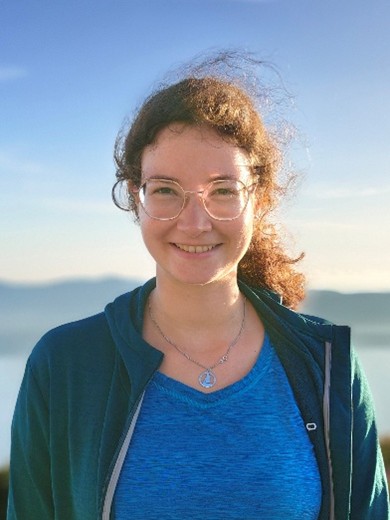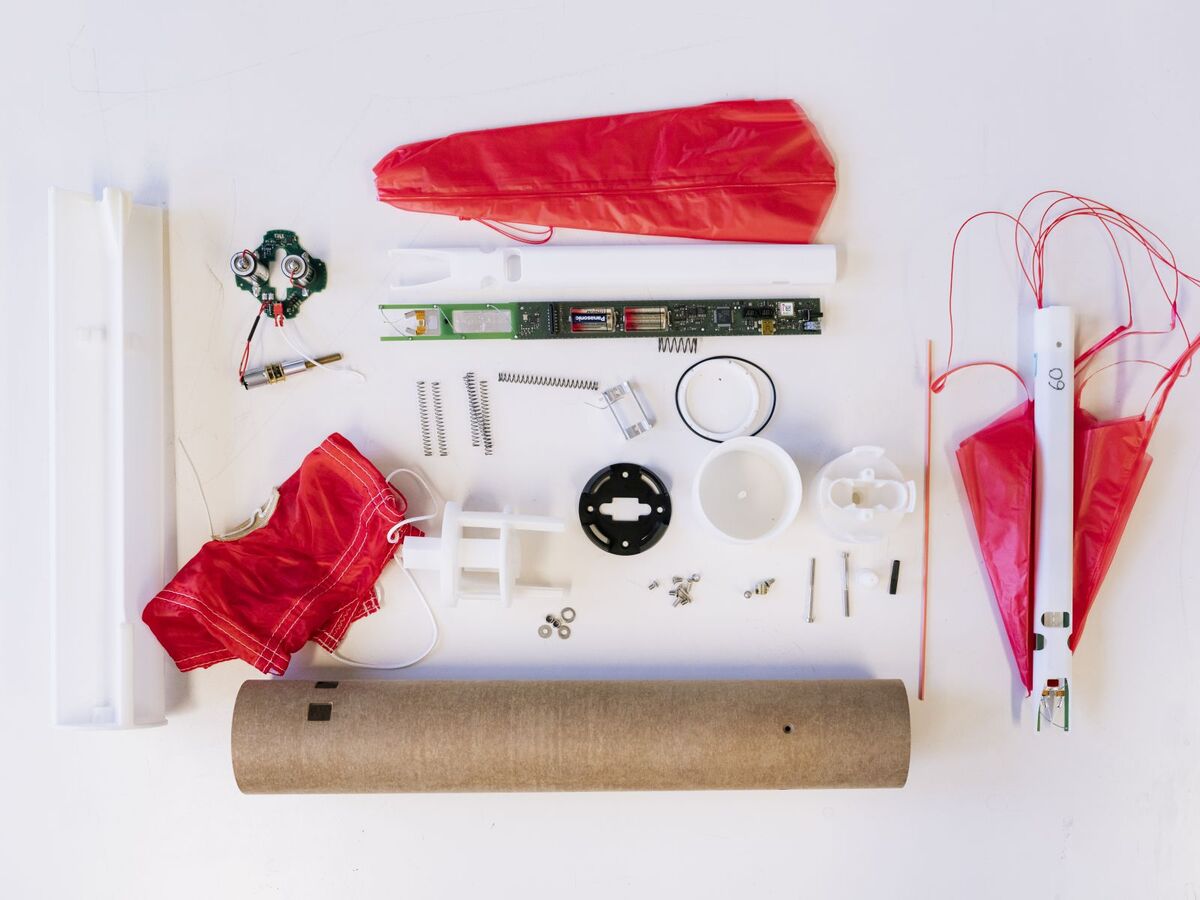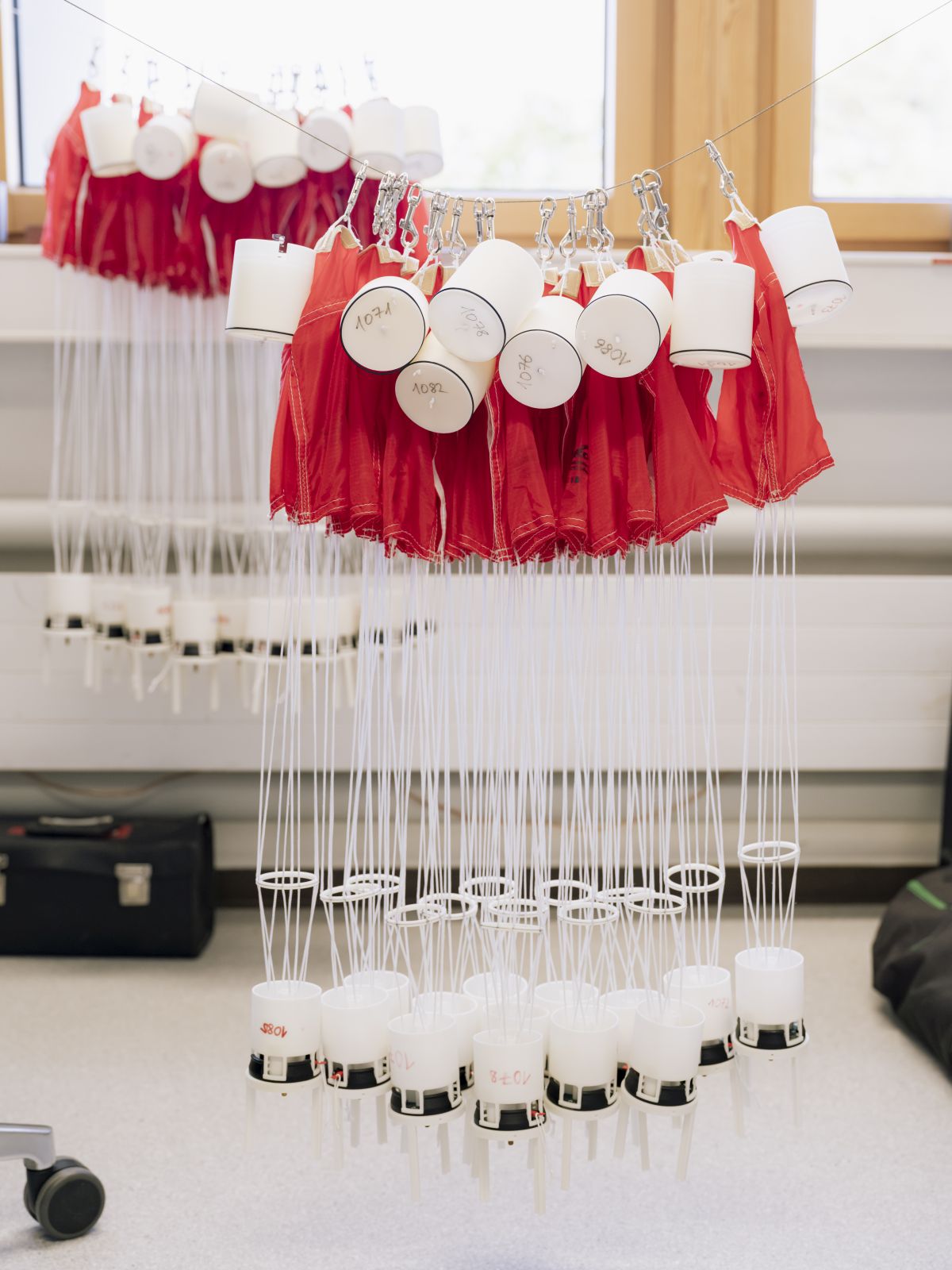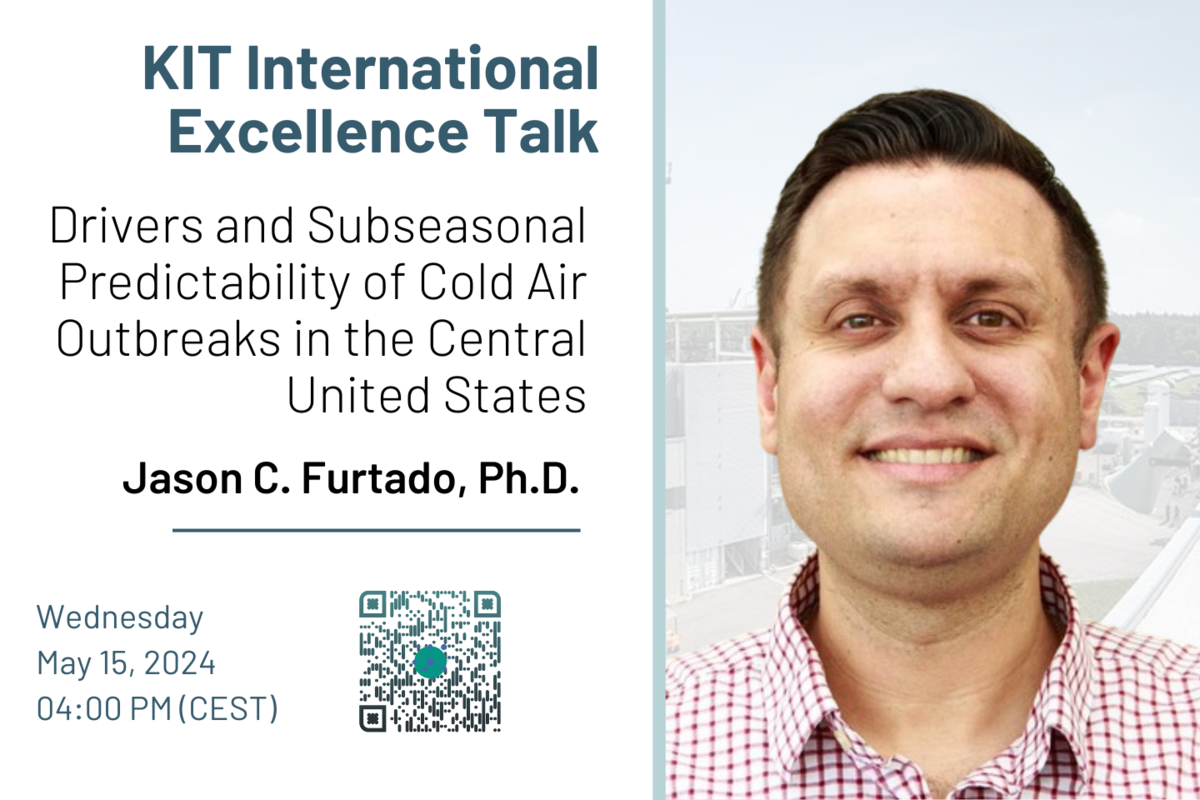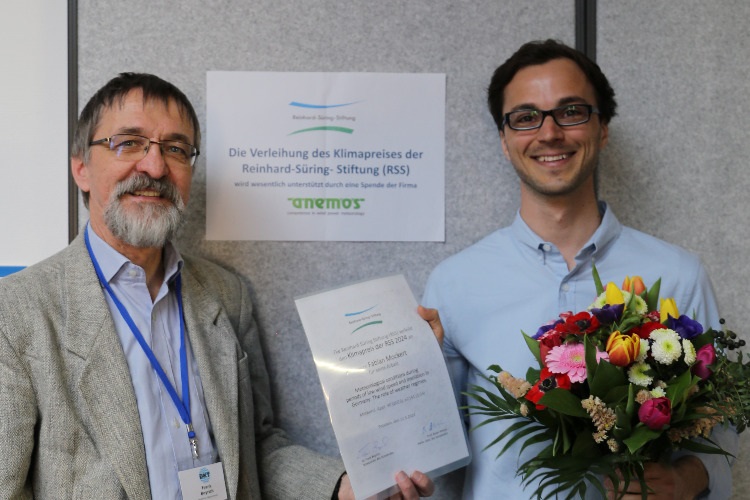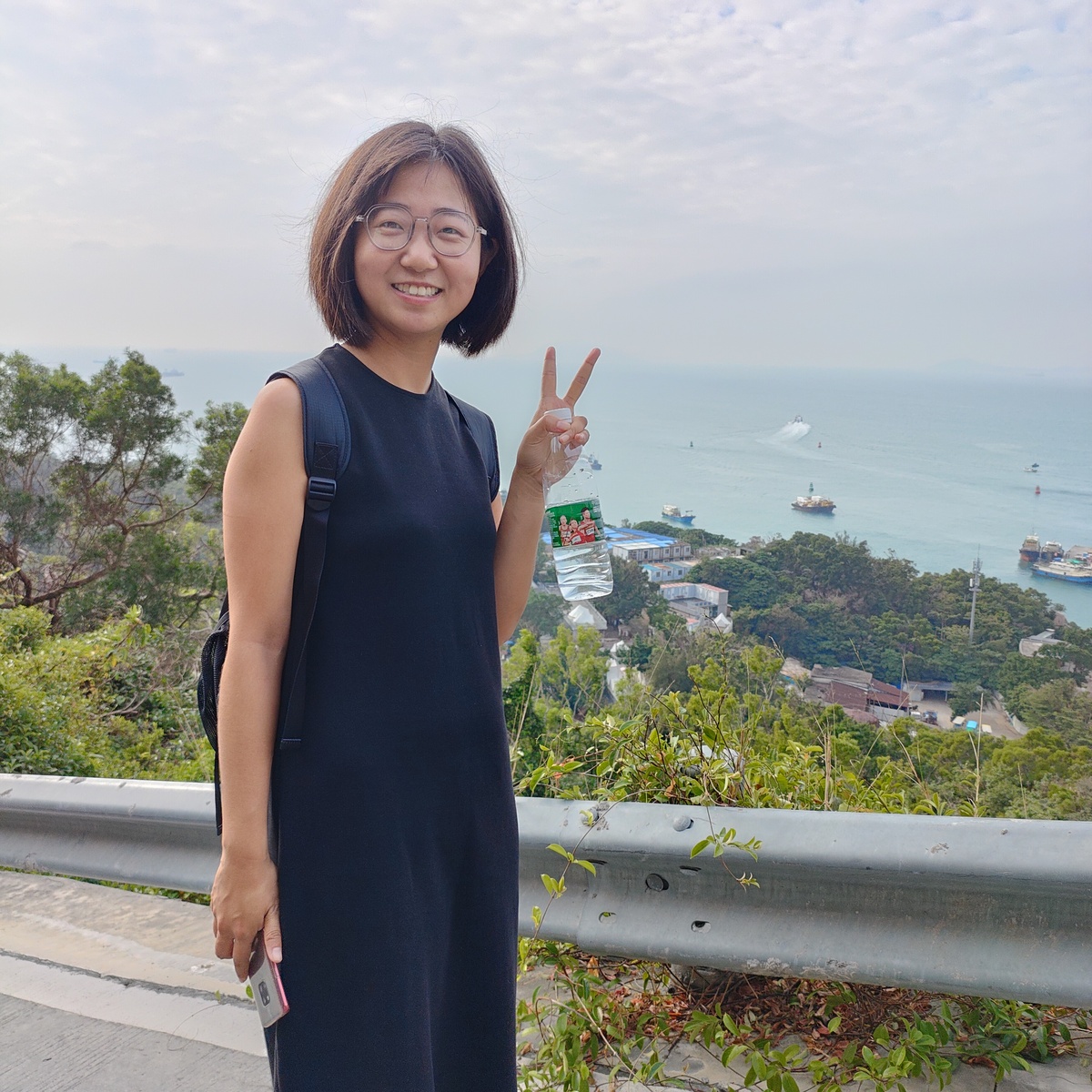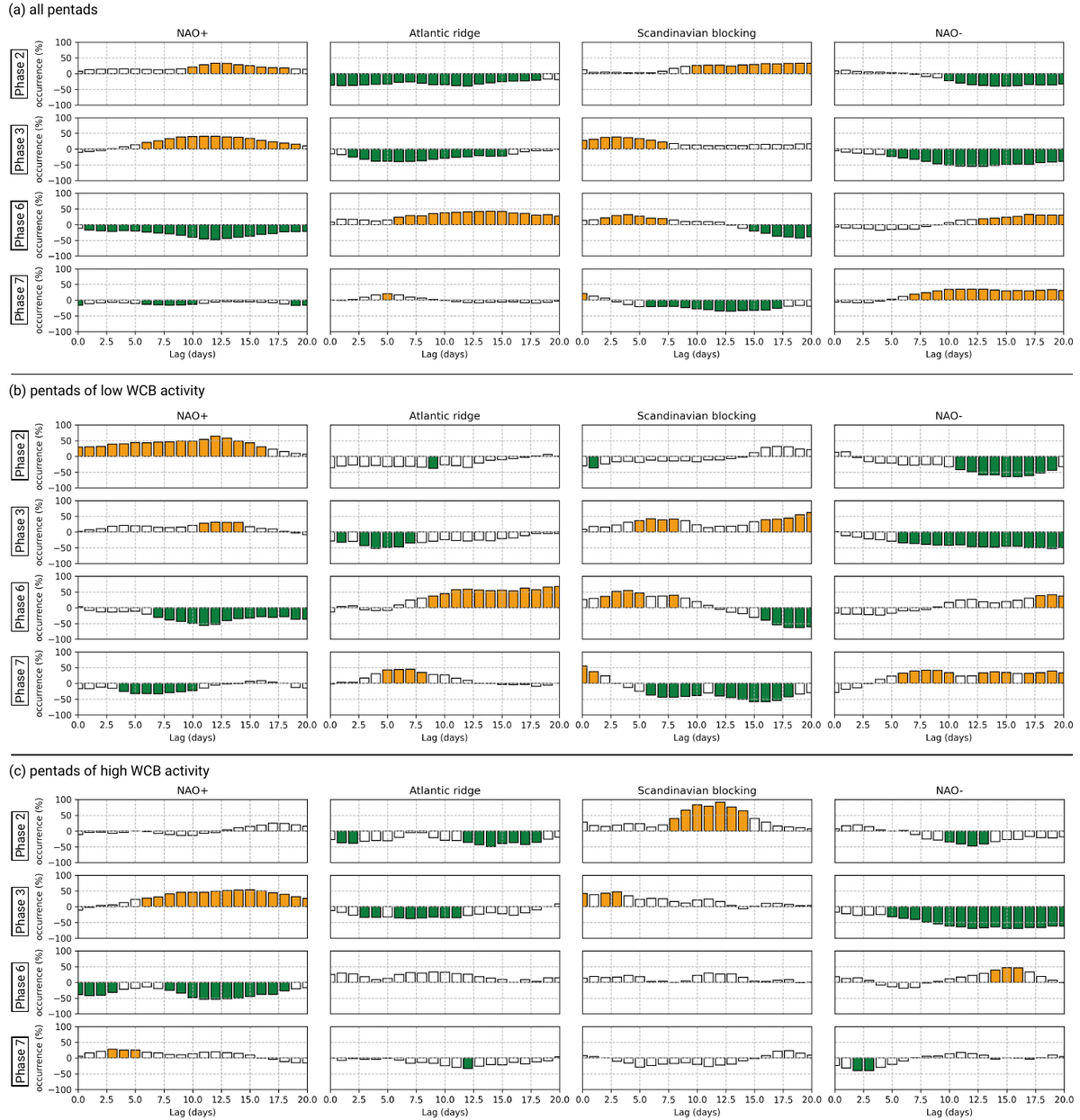26/03/2025 - Machine learning model for the prediction of hail in Germany
Hailstorms present significant risks in Germany (Figure 1), causing substantial economic damage and necessitating accurate forecasts for timely warnings. In this study IMKTRO scientists from the research groups “Atmospheric Risks”, “Atmospheric Dynamics” and “Meteorological Data Science” investigate the potential of machine learning, more specifically convolutional neural networks (CNNs), in predicting the daily hail-affected area in Germany originally identified from radar data for the period 2005 to 2019.
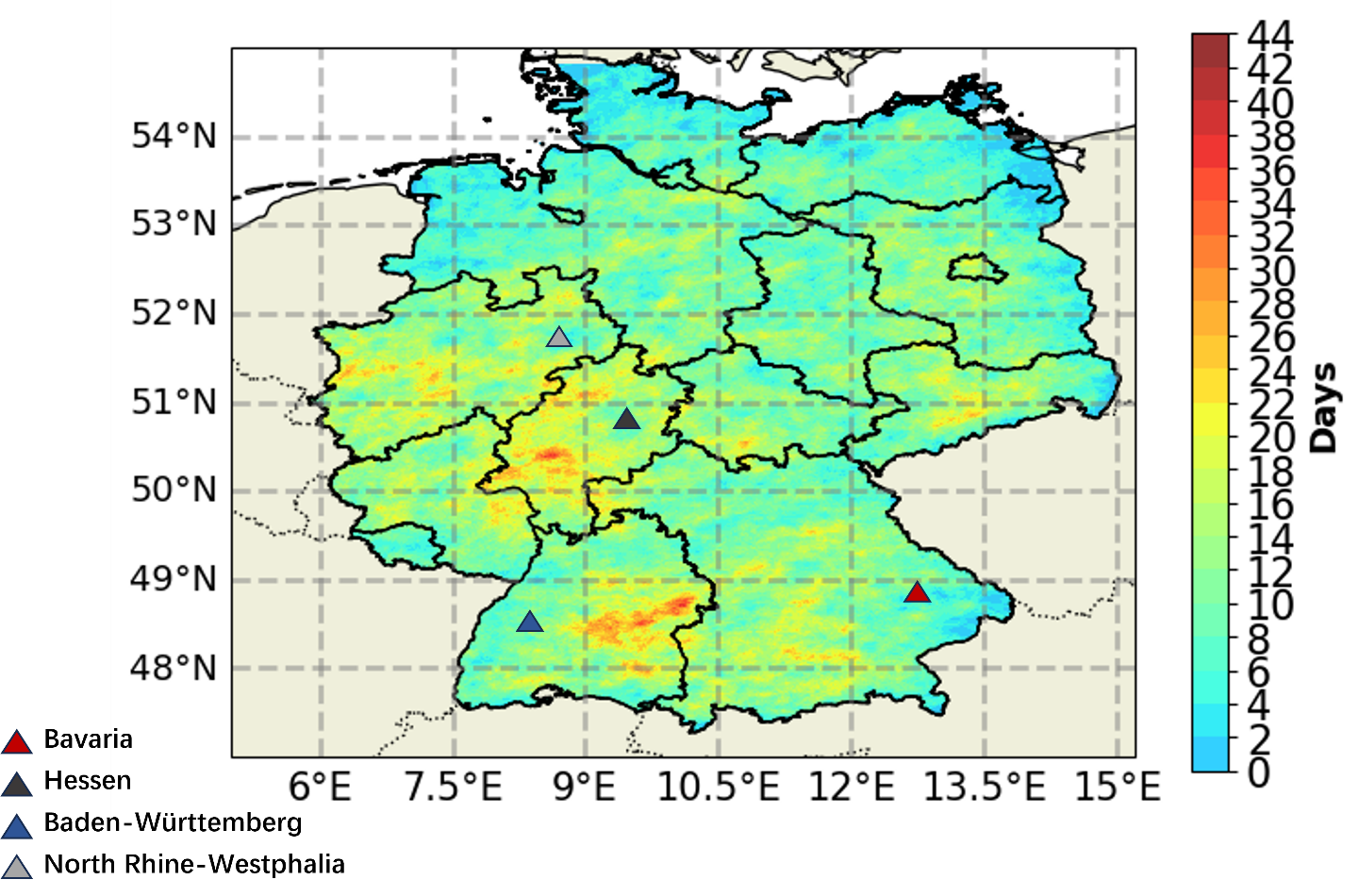
The study initially evaluates 18 thermodynamic and dynamic convection-related parameters as potential predictors for the hail-affected area which are derived from the ERA5 reanalysis data set. Through feature selection techniques seven key predictors are identified. Among these, a parameter including information regarding the energy available to convection and the vertical wind shear (CAPESHEAR) emerges as the most influential factor for hail prediction (Figure 2). “The machine learning model is evaluated against traditional climatology- and persistence-based forecasts, demonstrating superior performance particularly for large hail events” says Siyu Li, lead author of the study.

To explore the model’s decision-making process for its prediction, a method rooted in methods of explainable AI is applied. The results underscore the dominant role of CAPESHEAR in influencing predictions. However, the model exhibits reduced skill in scenarios where CAPESHEAR values are comparably low or when hailstorms occur in isolated events. These findings suggest that while the CNN approach provides a significant improvement over traditional methods, additional regional refinements and severity classifications could further enhance predictive capability.
“One of the key advantages of this ML-based approach is its computational efficiency, making it a promising candidate for operational forecasting applications”, states Siyu Li. “Future research directions could include refining regional perspectives and integrating severity metrics to enhance the model’s applicability in real-world forecasting scenarios.”
This research highlights the potential of machine learning techniques in meteorology and showcases how AI can contribute to improving predictions and understanding of weather hazards. By harnessing environmental convective parameters, this method represents a step forward in providing more accurate and timely hailstorm forecasts.
You can find the article in: https://www.frontiersin.org/journals/earth-science/articles/10.3389/feart.2025.1527391/full
17/02/2025 - Welcome Prabhakar Namdev
Prabhakar Namdev recently joined the Meteorological Data Science group as a postdoctoral researcher. He has completed his PhD in Atmospheric Science from IIT Delhi, India, in 2024, where his research focused on improving the representation of surface and boundary layer processes in regional and global scale numerical models for India-centric climate simulations. Prior to that, he earned a Master's degree in Mathematics and Computing from IIT Guwahati, India. His current work will be contributing to the WarmWorld project in collaboration with colleagues at the Scientific Computing Center, the Institute for Statistics and the working group Regional Climate modelling. The aim will be to initialize ML-based weather prediction models from climate projections and to analyse their capability to generalize in a warmer climate. We wish Prabhakar a successful start and a joyful time at IMKTRO!
20/01/2025 - Welcome Jasmin Haupt
We warmly welcome Jasmin Haupt as a new PhD student in the Meteorological Data Science group. During her Bachelor's in Physics at KIT, she worked for three years as a student assistant in the laboratory of Prof. Wernsdorfer, which provided Jasmin the opportunity to write her Bachelor's thesis in the Magnetism and Spin Electronics group at Trinity College Dublin. In her Master's studies in Physics at KIT, Jasmin focused on theoretical solid-state physics and meteorology. The Master's thesis project, under the supervision of Prof. Peter Knippertz and Prof. Andreas Fink, investigated the impact of sea surface temperature on the land-sea breeze along the Guinea Coast using sensitivity experiments in the ICON model. We are very happy to have Jasmin in the team and wish her all the best for the PhD and lots of fun with colleagues at IMKTRO!
14/10/2024 - Welcome Sonal Rami
The working group “Meteorological Data Science” welcomes Sonal Rami as a postdoctoral researcher. Sonal completed her master's in computer science and engineering at Gujarat Technological University, India. Sonal is currently in the final stage of completing her PhD in the interdisciplinary fields of machine learning and physical oceanography at Alfred Wegener Institute, Helmholtz Center for Polar and Marine Research, University of Bremen, and Helmholtz School for Marine Data Science (MarDATA).
During the PhD, Sonal addressed the growing challenge of managing vast oceanographic data by adopting an interpolation-based approach. She proposed a hybrid CNN-BiLSTM deep learning model, which optimized both data storage and interpolation accuracy. This method reduced data storage requirements while ensuring the accurate reconstruction of sea surface temperature (SST) and 3D ocean variables (such as temperature, and u and v velocities) derived from the Finite-volumE Sea ice–Ocean Model (FESOM2).
In her postdoc position at KIT, Sonal will be working on the “Advancing Subseasonal Predictions at Reduced Computational Effort (ASPIRE)” project. The goal is to develop advanced deep learning models for subseasonal to seasonal (S2S) forecasts. This work will involve fine-tuning existing models to specifically enhance S2S forecasting, with the aim of publishing an efficient, well-trained model that significantly reduces computational costs while maintaining accuracy. We wish Sonal a great start at KIT and in Karlsruhe!
04/10/2024 - KITsonde assembling week for NAWDIC
The KITsonde is a modular multi-sensor dropsonde system that allows to simultaneously launch up to four meteorological measurement sondes from a research aircraft. Shortly after being dropped from more than 10 km above ground, the sondes are released from a discharge container and drift on diverging trajectories due to differently sized parachutes. When reaching the ground, the sondes have separated by up to 70 km, depending on the prevailing wind profile. Meteorological measurements and position data are sent to the aircraft every second, which allows to capture both vertical profiles of temperature, humidity, and wind at a resolution of around 10 m and the mesoscale variability of the troposphere.
During the planned North Atlantic Waveguide, Dry Intrusion, and Downstream Impact Campaign (NAWDIC, https://www.nawdic.kit.edu/) in January and February 2026, the KITsonde system will be used together with remote sensing instruments on board of the German high-altitude and long-range research aircraft HALO (https://halo-research.de/). The central goal of NAWDIC is to sample dry intrusion air streams and frontal boundaries in extra-tropical cyclones over the North Atlantic to better understand and predict the processes leading to damaging wind storms and heavy precipitation events.
The unique and specially designed KITsonde system was developed at IMKTRO in collaboration with enviscope GmbH and Graw Radiosondes GmbH & Co. KG and is prefabricated only in small numbers. Members of the NAWDIC team as well as highly motivated colleagues of the institute now spent a whole week assembling release containers, cutting parachutes, and packing measurement sondes (Figs. 1 & 2). Thanks to this great collaborative effort, we have completed more than 20 release containers packed with a total of 60 sondes, which will be deployed for preparatory measurements during the ASCCI campaign (https://halo-research.de/sience/future-missions/ascci/) in March 2025. For NAWDIC, another 110 release containers equipped with 340 sondes will be prepared for airborne deployment. The measurements taken with the KITsonde system during both campaigns will be sent in real-time to the Global Telecommunication System (GTS) of WMO. This will make the data available to meteorological centers worldwide and allow the data to be assimilated into their numerical weather prediction systems.
26/03/2024 - Welcome Jason Furtado
The “Meteorological Data Science” group warmly welcomes Prof. Jason Furtado (https://ifurtado.org/) from University of Oklahoma. Jason will stay with us for the next three months funded through a KIT International Excellence Fellowship. Jason and his group research the dynamics of different internal modes of variability in the Earth System and how these interact with each other. A particular focus is on the subseasonal time-scale and the role of the stratosphere and ENSO in providing windows of opportunity through teleconnections. During his stay at KIT, Jason and the Meteorological Data Science group will study the forecast skill of subseasonal North American Weather regime predictions and how this skill is affected by modes of variability and midlatitude cyclone activity. We wish Jason a joyful and productive stay in the institute!
23/03/2024 - Fabian Mockert was awarded the Climate Prize of the Reinhard-Süring Foundation
Fabian Mockert was awarded the Climate Prize of the Reinhard-Süring Foundation during the 13th German Climate Conference at the Telegrafenberg in Potsdam. The prize honors his research on Dunkelflauten (a compound event of low wind and solar energy yield) in Germany and their relation with large-scale weather patterns [1]. The meteorological Reinhard-Süring Foundation awards the €1500 prize as part of the triennial German Climate Conference to outstanding young scientists. This year, the prize was awarded in the field of "climatological data for the Energy and Agricultural transition". We would like to congratulate Fabian on this award!
[1] Mockert, F., Grams, C. M., Brown, T., & Neumann, F. (2023). Meteorological conditions during periods of low wind speed and insolation in Germany: The role of weather regimes. Meteorological Applications, 30(4), e2141. https://doi.org/10.1002/met.2141
Further information:
Homepage Fabian Mockert: https://www.imk-tro.kit.edu/14_11644.php
Reinhard-Süring Foundation: https://www.rs-stiftung.org/ (in German)
13th German Climate Conference: https://dkt-13.de/ (in German)
News Article on “Dunkelflauten”: https://www.imk-tro.kit.edu/english/12085.php
05/02/2024 - Welcome Meng Wang
The “Meteorological Data Science” group welcomes Meng Wang as a visiting PhD student. Meng is currently doing her PhD at the School of Atmospheric Sciences, Sun Yat-sen University, China with Professor Xiuzhen Li focusing on the interaction of high- and low-latitude Rossby waves leading to extreme cold-wet weather conditions in South China. During her stay, she will specifically investigate to what extent the excitation of these waves is linked to the large-scale circulation over the North Atlantic. Meng Wang successfully applied for scholarship funded by the China Scholarship Council which will allow her to stay with us for 12 months until January 2025. We look forward to learning about her research and wish her a joyful stay at IMKTRO! If you would like to learn more about cold-wet extremes in South China, please meet Meng at Campus North, Building 435, Room 219.
03/11/2023 - Welcome Bastian Kirsch
We warmly welcome Bastian Kirsch in the WG „Meteorological Data Science“. Bastian grew up near Hamburg where he studied Meteorology focusing on radar meteorology. In 2022, Bastian completed his PhD under the supervision of Prof. Felix Ament and Cathy Hohenegger entitled “Illuminating convective cold pools with a dense station network”. During his PhD Bastian was heavily involved in the FESSTVaL campaign which took place near the Lindenberg observatory. In the coming years, Bastian will bring in this expertise at IMK-TRO to coordinate the “North Atlantic Waveguide, Dry Intrusion and Downstream Impact Campagin (NAWDIC)”. We are very happy to have Bastian in the NAWDIC team and look forward to the campaign preparation and implementation in winter 2025/2026.
20/09/2023 - Welcome Siyu Li
We warmly welcome Siyu Li in the WG „Meteorological Data Science“. Siyu Li completed her BSc at Nanjing University of Information Science and Technology (NUIST) in June 2020 where she evaluated the representation of major sudden stratospheric warming events in the CESM-WACCM. Siyu then moved to Karlsruhe to complete her Master's degree at the IMK. For her Master’s thesis, Siyu joined the working group „Atmospheric risks“ where she developed a machine learning model for hail prediction in Germany. The PhD project will also include machine learning. As part of the project "Advancing subseasonal predictions at reduced computational effort", Siyu will address the question of how short-term forecast errors in the tropics affect the reliability of subseasonal predictions in Central Europe.


